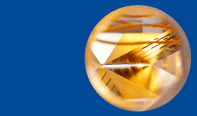Paula - Linear Quantum-Spin Systems
Florian Hasse, Deviprasath Palani, Apurba Das, Ulrich Warring, and Tobias Schaetz
Linear Quantum Worlds – Exploring Extreme Conditions
Quantum Simulation with Trapped Atomic Ions
Richard Feynman initially introduced the concept of utilizing a controlled quantum system as a quantum computer (QC) to efficiently solve problems too intricate for classical computers, like the quantum dynamics of many-body systems. Nowadays, we differentiate this original idea as an analog quantum simulator (AQS) from a QC, where the system's dynamics are executed through gate operations algorithms on qubit subsets. In AQS, we carefully evolve a quantum system from a known initial state to a new one by manipulating its Hamiltonian, unveiling complex dynamics such as quantum phase transitions. Both AQS and QC are instrumental in exploring underlying physics and can simulate processes in quantum chemistry and possibly in quantum biology, like photosynthesis, where the role of quantum mechanics in influencing biological and macroscopic entities is still discussed. Observing a controlled model quantum system directly helps us gain a profound understanding of these essential components.


Laser cooled trapped ions form complex 3D (cp. KINKS) and more simple linear Coulomb crystals.


Impressions from our quantum lab: ion trap, laser system, and second-harmonic-generation stage.
Our Basic Tool Kit
| We use a conventional linear Paul trap designed for linear ion chains, featuring segmented electrodes specifically for loading and experimental zones. The trap has characteristic widths of approximately 800 micrometers and 400 micrometers, a drive frequency around 56 Megahertz, along with axial and radial motional frequencies ranging from approximately 0.5 to 2.5 Megahertz and 3.5 to 5.5 Megahertz respectively. The trap depth is above 1 electron volt, ensuring a stable environment for our experiments. We achieve full control over quantum states through the application of Raman beams and microwaves, allowing for precise manipulation and observation. | |
| We have full control over both internal and external degrees of freedom of our Mg anions within our experiments. This includes the implementation of Doppler and sideband cooling and optical pumping, allowing us to navigate into the long-lived states within the ground state hyperfine manifold. Our high-fidelity control over the electronic/internal degree of freedom is achieved using microwaves or Raman beams. We also employ coupling to motion/external DOF with pairs of Raman beams that make use of two-photon stimulated Raman transitions. Additionally, we conduct state read-out through fluorescence from a state-selective cycling transition, allowing for precise and detailed observations. Similar tools are available in BERMUDA. |
Our Past Steps into Extremes
- Trapped-ion toolkit for studies of quantum harmonic oscillators under extreme conditions
M. Wittemer, J.-P. Schröder, F. Hakelberg, P. Kiefer, C. Fey, R. Schuetzhold, U. Warring, T. Schaetz
Philosophical Transactions of the Royal Society A, 378:20190230
- Phonon pair creation by inflating quantum fluctuations in an ion trap M. Wittemer, F. Hakelberg, P. Kiefer, J.-P. Schröder, C. Fey, R. Schützhold, U. Warring, T. Schaetz
Phys. Rev. Lett. 123, 180502 (2019) - arXiv:1903.05523 (2019)
- Measurement of quantum memory effects and its fundamental limitations
M. Wittemer, G. Clos, H.-P. Breuer, U. Warring, T. Schaetz
Phys. Rev. A 97, 020102(R) (2018) - arXiv: 1702.07518 (2017) - The new thermodynamics: how quantum physics is bending the rules
Nature 551, 20–22 (2017)
- Time-resolved observation of thermalization in an isolated quantum system
G. Clos, D. Porras, U. Warring, T. Schaetz
Phys. Rev. Lett. 117, 170401 (2016) - arXiv: 1509.07712 (2015) - Decoherence-assisted spectroscopy of a single Mg+ ion
G. Clos, M. Enderlein, U. Warring, T. Schaetz, D. Leibfried
Phys. Rev. Lett. 112, 113003 (2014) - arXiv:1402.1678 (2014) - Quantum walk with non-orthogonal position states
R. Matjeschk, A. Ahlbrecht, M. Enderlein, Ch. Cedzich, A. H. Werner, M. Keyl, T. Schaetz, R. F. Werner
Phys. Rev. Lett. 109, 240503 (2012) - arXiv:1206.0220 (2012) - Experimental simulation and limitations of quantum walks with trapped ions
R. Matjeschk, Ch. Schneider, M. Enderlein, T. Huber, H. Schmitz, J. Glueckert, T. Schaetz
New J. Phys. 14, 035012 (2012) - arXiv:1108.0913 (2011) - Quantum Odyssey of Photons
T. Schaetz, Ch. Schneider, M. Enderlein, T. Huber and R. Matjeschk
ChemPhysChem 12, 71-74 (2011) - The quantum Walk of a trapped Ion in phase space
H. Schmitz, R. Matjeschk, Ch. Schneider, J. Glueckert, M. Enderlein, T. Huber and T. Schaetz
Phys. Rev. Lett. 103, 090504 (2009) - The 'arch' of simulating quantum spin systems with trapped ions
H. Schmitz, A. Friedenauer, Ch. Schneider, R. Matjeschk, M. Enderlein, T. Huber, J. Glueckert, D. Porras and T. Schaetz
Appl. Phys. B 95, 195 (2009) - Simulating a quantum magnet with trapped ions
A. Friedenauer, H. Schmitz, J. Glueckert, D. Porras and T. Schaetz
Nature Physics 4, 757 - 761 (2008)
